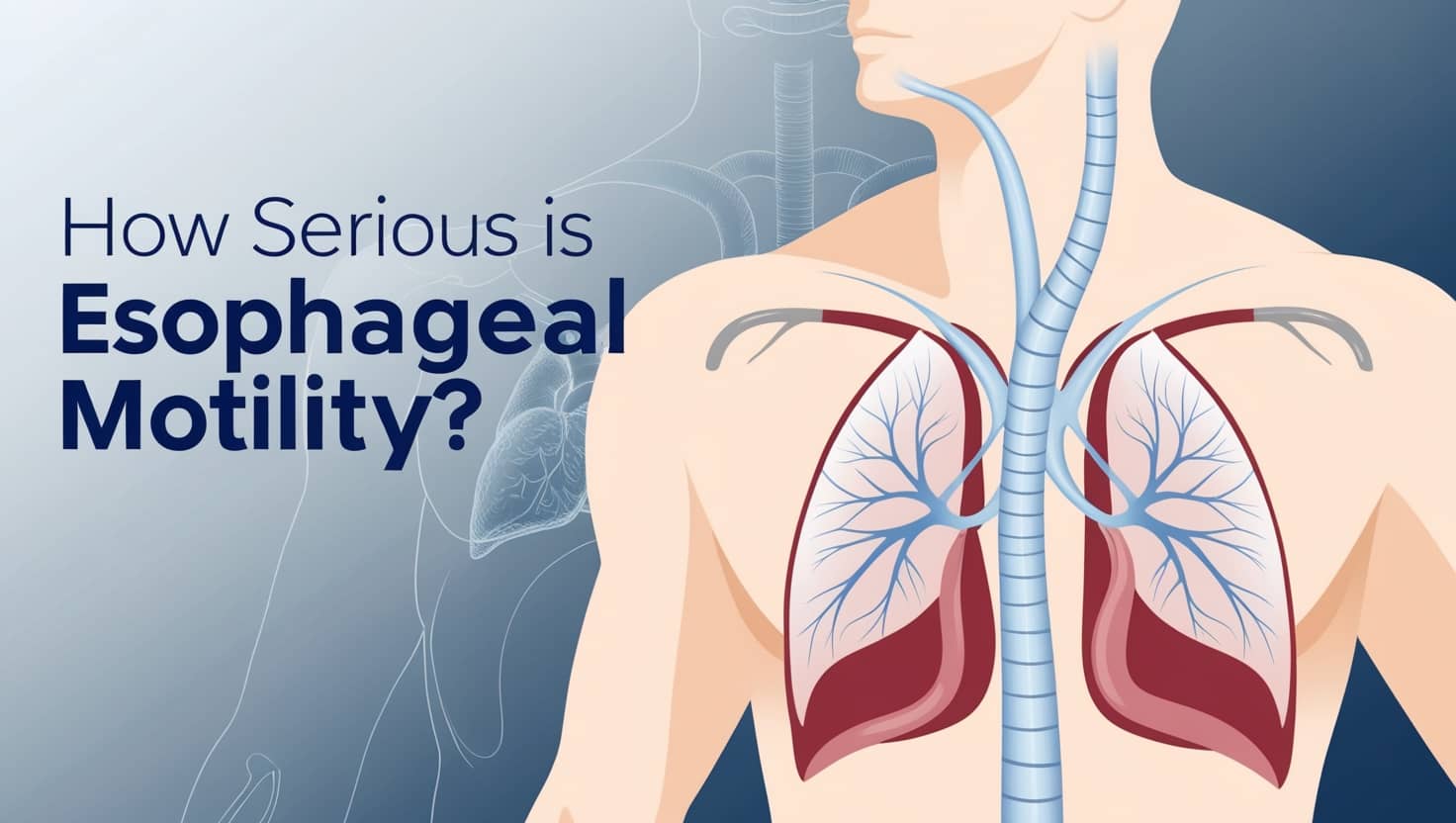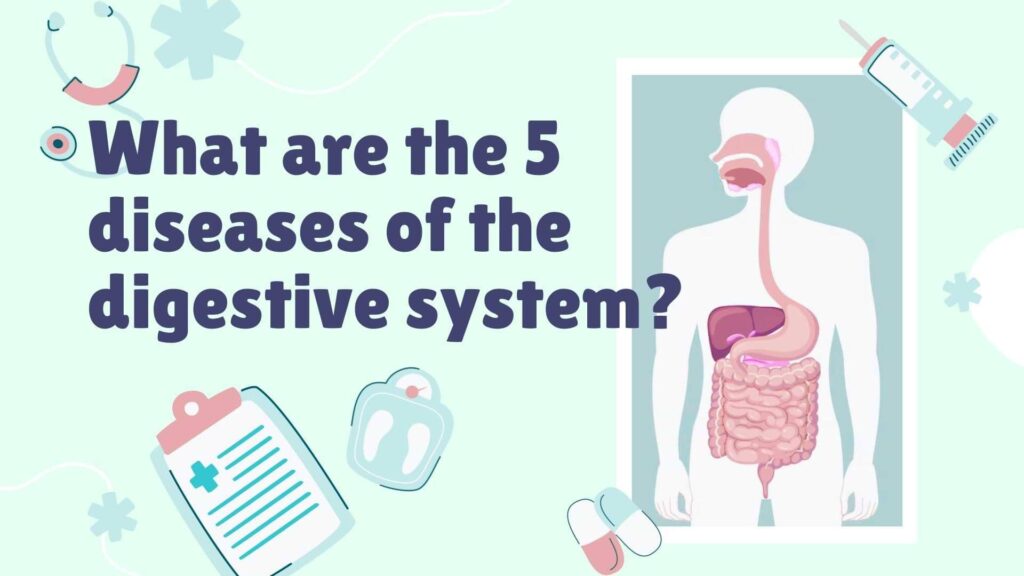The esophagus is an important organ in the digestive system that transports food from the throat to the stomach. To perform this task effectively, its muscles contract and expand in a tight system, preventing food from refluxing into the throat and preventing stomach acid and other contents from reaching its tissues.
The esophagus produces mucus that is added to the food bolus in order to facilitate its movement to the stomach.
In some cases, the movement of the esophagus is disturbed, causing unwanted symptoms such as difficulty swallowing, heartburn, and choking.
But How Serious Is Esophageal Motility? This is what we will explain in detail in the following paragraphs.
Seriousness of Esophageal Motility Issues
The complications that can occur determine How Serious Is Esophageal Motility, including malnutrition, weight loss, and pneumonia.
The following are the possible effects of esophageal motility disorder:
- Interference with daily life: Esophageal relaxation causes symptoms such as difficulty swallowing, chest pain, or belching, all of which are annoying symptoms that affect quality of life and eating habits.
- Complications of the disease: In severe cases, a person can suffer from complications such as aspiration pneumonia due to food entering the respiratory tract, and may suffer from malnutrition due to the inability to eat properly and suffer from esophageal stricture.
- Underlying conditions: Some cases of esophageal motility disorder occur as a result of some underlying diseases such as scleroderma, an autoimmune disease, which can pose a significant risk to the patient.
- Esophageal achalasia: Esophageal achalasia is a severe form of esophageal motility disorder in which the lower esophageal sphincter fails to relax, leading to significant difficulty in swallowing and food retention in the esophagus.
Diagnosis of Esophageal Motility Disorders
Since functional lumen imaging probes (FLIP) are only used at a small number of tertiary centers and are very specific to esophageal motility problems, endoscopy, barium swallow, and interviews are effective screening methods.
Due to the lack of a gold standard for diagnosing esophageal motility disorders, it is also crucial to remember that before beginning invasive therapy, patients’ symptoms and the results of various modalities are taken into account.
Subtypes of Esophageal Motility Disorders
1. Achalasia
Achalasia is an esophageal motility condition defined by the absence of the myenteric plexus, resulting in decreased relaxation of the lower esophageal sphincter and no peristalsis.
Using High-resolution manometry, achalasia is divided into three types: –
- Type 1 with failed contractions.
- Type 2 with failed contractions accompanied by pan-esophageal pressurization
- Type 3 with premature contractions.
Patients with achalasia type 1 showed a slightly higher level of ganglion cell loss.
Achalasia Treatment
Achalasia can be treated with medicines, botulinum toxin injections, pneumatic dilatation (PD), per-oral endoscopic myotomy (POEM), or laparoscopic Heller myotomy (LHM).
While sildenafil, nitrates, and calcium channel blockers have been shown to lower esophagogastric junction pressure, their effects on patients’ symptoms are still up for debate.
2. Esophagogastric Outflow Obstruction
It is characterized by elevated integrated relaxation pressure (IRP) in conjunction with esophageal peristalsis.
This diagnosis encompasses a variety of diseases, including achalasia changes, postsurgical interventions, malignancy, luminal stricture, cardiovascular compression, opioid use, paraesophageal hernia, and artifacts.
Invasive treatment for EGJOO should only be undertaken if a functional lumen imaging probe or timed barium esophagogram reveal objective evidence of EGJOO without spontaneous resolution.
Pneumatic dilatation, botulinum toxin injections, and per-oral endoscopic myotomy were all beneficial in limited case series; however, a randomized trial has yet to be completed.
Acotiamide, a clinically utilized treatment for functional dyspepsia, has been shown to lower IRP in EGJOO patients.
3. Spastic Motor Disorders: Distal Esophageal Spasm and Hypercontractile Esophagus
The appearance of a rosary bead/corkscrew on a barium swallow (or endoscopy) supports these diagnoses.
There are currently no known treatments for spastic diseases.
Noninvasive pharmaceutical therapies such phosphodiesterase-5 inhibitors, nitrates, and calcium channel blockers must be taken into account.
4. Hypomotility Disorders: Ineffective Esophageal Motility and Absent Contractility
According to Chicago Classification version 4.0, inefficient esophageal motility (IEM) is defined as more than 70% ineffective swallows or at least 50% unsuccessful peristalsis, whereas it was described as more than 50% ineffective swallows in Version 3.0.
According to Chicago categorization version 4.0, ineffective esophageal motility is more likely to be linked to GERD.
Treatment for hypomotility disorders is quite difficult. As of right now, there are no pharmaceutical interventions that can strengthen weak contractions.
Lifestyle modifications, such as cutting food into small pieces, chewing thoroughly, eating in an upright position (or avoiding lying down for a few hours after meals), and diaphragmatic breathing, may be beneficial, although there is a lack of high-quality supporting evidence.
Risks of Esophageal Motility Disorders
Esophageal motility disorders affect your daily life, reduce your quality of life, and can be life-threatening.
These risks include:
- Aspiration pneumonia: This occurs when food enters the airway, causing coughing or pneumonia.
- Weight loss: People with esophageal relaxation may lose weight because of difficulty eating.
Other symptoms of esophageal motility disorders include:
- Difficulty swallowing (dysphagia).
- Chest pain.
- Heartburn (gastroesophageal reflux disease).
- Regurgitation of undigested food. (MedlinePlus, n.d.)
The risk of developing the disease may also be increased if you have:
- Spinal cord injuries.
- Anorexia nervosa.
- An ulcer, narrowing, irritation, infection, inflammation, or cancer of the esophagus.
- Abnormal muscles in the mouth, throat, or esophagus.
- Nerve or brain problems.
Health Problems Linked to Esophageal Dysfunction
Health problems that result from esophageal dysfunction are what determine How Serious Is Esophageal Motility
This includes heartburn, difficulty swallowing, and pneumonia, and if left untreated, it may develop into the following conditions:
- Esophageal cancer: Chronic inflammation of the esophagus increases the risk of esophageal cancer.
- Aspiration pneumonia: Reflux of stomach contents into the lungs leads to pneumonia.
- Malnutrition and dehydration: Problems swallowing lead to malnutrition and dehydration.
Other health problems include:
- Esophagitis.
- Pain and difficulty swallowing.
- Esophageal stricture.
- Scleroderma.
- Aphagia.
- Barrett’s esophagus.
- Bile reflux.
- Esophageal spasms.
- Esophageal varices.
- Gastroesophageal reflux disease.
Hence, it is clear that Esophageal Dysfunction can become a serious health problem if left untreated, due to the serious damage it can cause to the body’s tissues.
References
- U.S. National Library of Medicine. (n.d.). Esophagus disorders from MedLinePlus
- Goyal, M. (2022, November 27). Esophageal motility disorders. from PubMed.
- Esophageal motility disorders: Diagnosis and treatment strategies | digestion | karger publishers.







